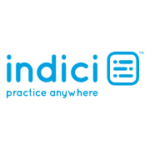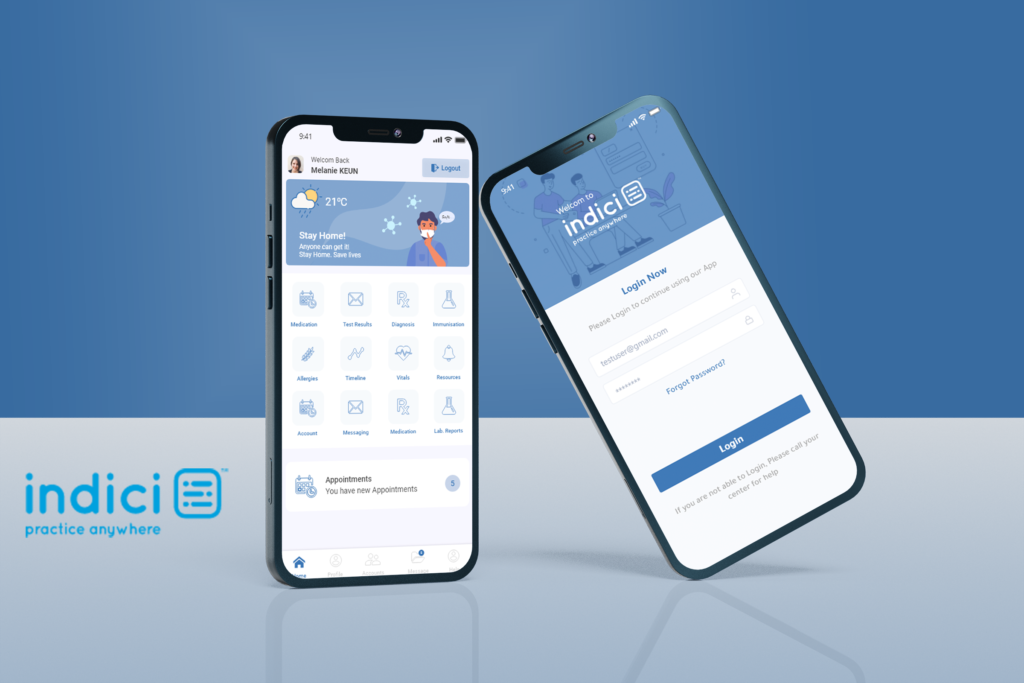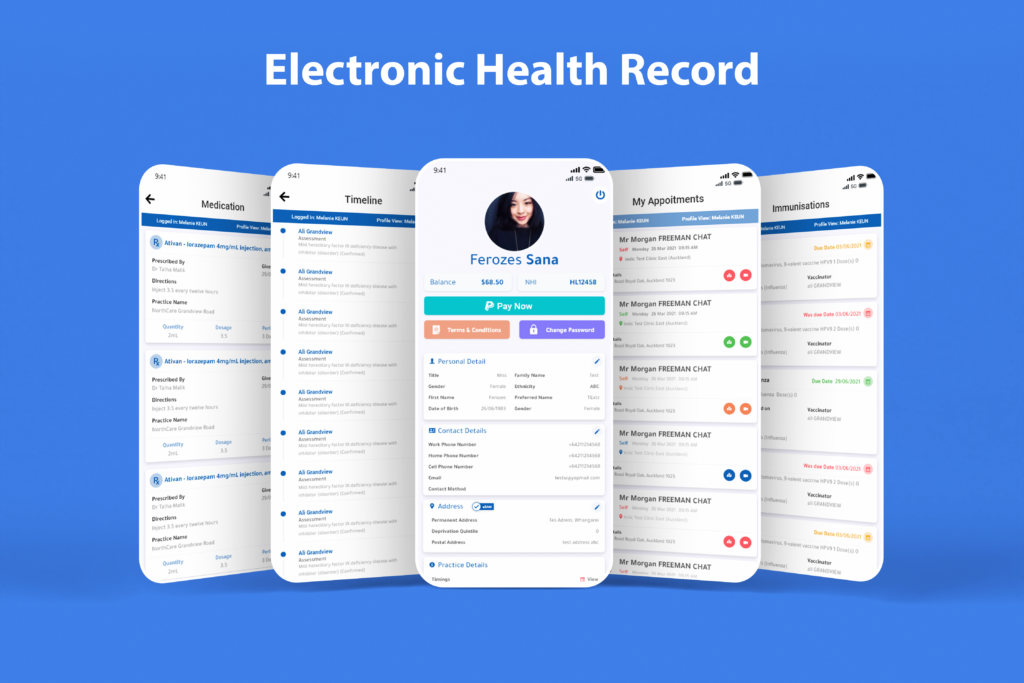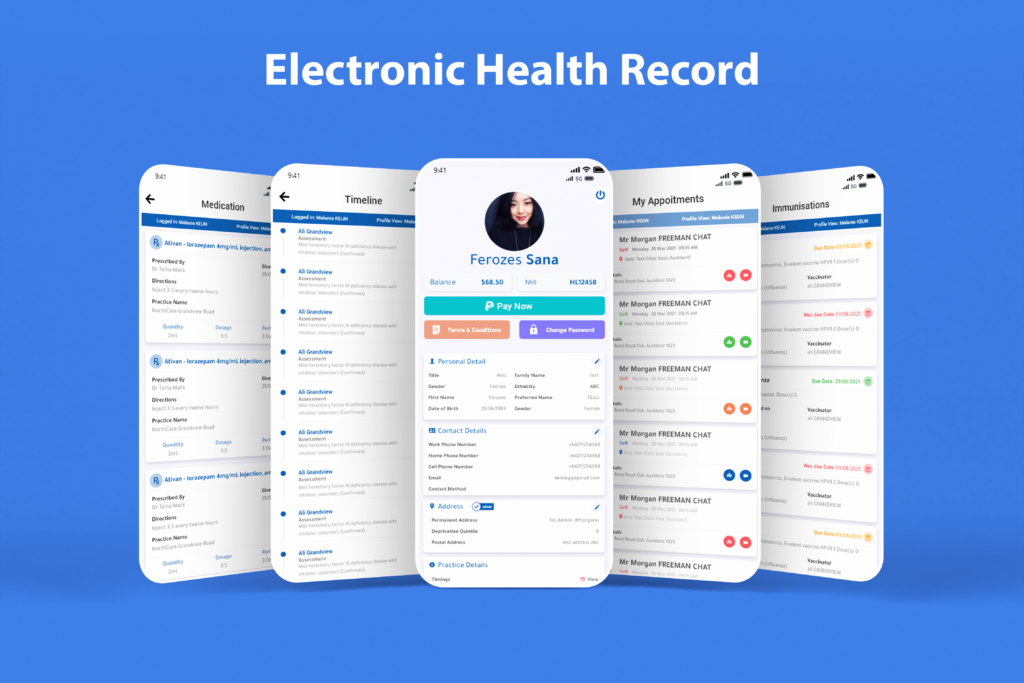In the next phase of this project, we will continue to prioritize user feedback to refine the Indici platform in line with the evolving needs of healthcare providers and patients. A key focus will be expanding the platform’s capabilities to support additional healthcare services and potentially scale to international markets. We also aim to enhance personalization, leverage advanced data analytics, and work closely with the marketing team to ensure the platform remains effective, user-centric, and widely adopted across diverse healthcare environments.

indici is a secure, user-friendly patient portal that brings the benefits of healthcare technology direct to the patient.
Leading Indici’s growth from a basic healthcare app to a comprehensive patient and provider platform, I collaborated closely with a diverse team including a project manager and engineers. Together, we transformed the platform through a strategic, user-focused approach that addressed real needs. This resulted in greatly improved user retention, increased new sign-ups, and strong recognition within the healthcare sector—all while strengthening engagement among both users and our team.
Role
Timeline
Core Responsibilities


Overview
Additional Context
Problem & Insights
Despite its core functionality, the Indici App fell short in delivering a seamless and user-friendly experience for both hospital staff and patients.
Patients and healthcare workers using the Indici App faced several important problems. Doctors and nurses couldn’t always get real-time patient information, found the appointment system confusing, and had trouble communicating with other departments. The app was also not easy to use on mobile devices.
Patients had their own issues, like unclear care instructions, trouble finding their health records, and problems booking follow-up appointments. These challenges showed that the app needed major improvements in both design and features to better support hospitals and give patients a smoother experience.
Goals
From Complexity to Clarity: Indici Health's Journey to Empower Patients and Providers
We had to fundamentally reassess the Indici App’s capabilities to transform it into a platform that genuinely supports both healthcare providers and patients. Faced with fragmented workflows and inconsistent user experiences, I redirected the team’s focus toward delivering purposeful, user-driven improvements. Informed by direct user feedback and a deep understanding of the challenges caused by missing or underdeveloped features, I developed a comprehensive four-phase strategy. This approach aimed to enhance the platform by:
Enabling real-time access to patient data for clinical staff.
Streamlining appointment scheduling and follow-up workflows.
Improving communication tools between departments and with patients.
Empowering patients with clear, accessible medical records and care plans.
The goal was to improve operational efficiency for hospitals while creating a more connected, transparent, and trustworthy healthcare experience for patients.

Solution
Introducing new features with a steadfast commitment to a user-centric approach, enhancing healthcare providers’ efficiency and patients’ engagement by delivering greater clarity, seamless communication, and proactive care management.
Through close collaboration with our product manager, developers, QA testers, data analysts, and customer support team, we transformed the Indici App from a fragmented tool into a truly user-centric healthcare solution. This resulted in improved clinical workflows, higher patient engagement, and clearer communication between providers and patients.
My commitment to a user-centered design ethos was strengthened as I gained a deeper understanding of our diverse user base—both healthcare professionals and patients—and their unique needs. This insight highlighted how prioritizing real user needs over trendy design fads leads to more meaningful and lasting impact. Grounding our decisions in solid research and continuous user feedback proved essential in delivering features that truly resonate and improve health outcomes.
Results
This culminated in an impressive 100% increase in user retention and a significant 60% growth in new patient and provider sign-ups, further solidifying Indici’s position as a trusted and impactful healthcare platform.
User feedback vividly illustrates the transformative impact of the Indici App’s enhancements. Many healthcare professionals praise the streamlined workflows and intuitive navigation that make managing patient care easier and more efficient. Patients, in turn, highlight the app’s improved clarity and transparency—especially around their medical records, appointment scheduling, and care plans. A recurring theme is the increased confidence and control users feel over their healthcare journey, empowered by clear information, timely updates, and tools that help them proactively manage their health.
User Research
Users expressed concerns about limited access to timely appointments and available healthcare services, which sometimes led to delays in care and increased anxiety about health outcomes.
Our research included talking to and surveying both healthcare workers and patients. We asked them about the problems they faced while using the Indici App, such as trouble finding their way around the app or accessing certain features. We learned that some users had a hard time switching between different parts of the app, like moving from the doctor’s view to the patient’s view. Some said this was confusing, and sometimes they couldn’t find the information they needed in certain sections.
We aimed to grow the Indici App’s features by listening closely to what users wanted and needed.
Many users expressed strong interest in specific healthcare areas such as nursing assistance, patient care coordination, medical administration, clinical support, and health education. These insights directly influenced our decisions, guiding us to expand and tailor the Indici App’s features to better support these key sectors.
Ideation
Exploring healthcare sectors and services that can help users overcome challenges in accessing timely care and improve their overall health stability.
During collaborative ideation sessions with the Project Manager and Business Analyst, we identified potential areas for platform expansion. Through detailed market research and analysis of user feedback, we evaluated both the healthcare sectors preferred by users and those facing staffing shortages, guiding our strategic focus for growth and feature development.
The development of a unified healthcare sector within the app brings together a broad spectrum of roles and services, making it easier for users to find relevant opportunities in one place.
Based on our research, we made the strategic decision to consolidate various healthcare roles under one main sector called Clinical Services. This sector includes multiple sub-categories such as nursing assistants, patient coordinators, medical technicians, clinical managers, and health educators.
During this fast-paced project, I played a multifaceted role—leading the design team and shaping the overall product strategy. My responsibilities included conducting thorough user research and interviews, guiding the creation of visual and interaction designs, and ensuring smooth collaboration with the front-end development team.
Validation
User preferences in A/B testing showed a clear favor for features without infographics, reinforcing our commitment to simple, user-friendly design that enhances satisfaction and ease of use.
In multiple rounds of A/B testing, users—especially middle-aged healthcare professionals and patients—favored a clean, text-based design over versions with infographics, finding it easier to navigate. They responded positively to new features like clearer appointment scheduling, better access to care plans and lab results, and more intuitive button placement. Improved contrast and visual hierarchy further enhanced usability, reinforcing our commitment to user-centered design.
Plan of Action
Execution of the design focused on building a scalable system that could easily support future healthcare service expansions and adapt to the evolving needs of hospitals, providers, and patients using the Indici platform.
In collaboration with our front-end engineer, data analyst, and Product Manager, we successfully implemented the redesigned Indici App. With valuable input from our CTO, I ensured the product was built with scalability in mind—enabling seamless integration of new healthcare services and features to meet the evolving needs of hospitals, providers, and patients.
Future steps
We prioritized user feedback to guide continuous improvements, focused on expanding healthcare features, enhanced personalization for both patients and providers, and leveraged data analytics to ensure the Indici platform remains effective, user-friendly, and responsive to evolving healthcare needs.
Reflection
Exploring healthcare service areas that can help address gaps in care delivery and reduce the strain on overworked providers, ultimately improving system efficiency and supporting better health outcomes for patients.
Redesigning the Indici platform was more than just another project—it was a meaningful journey with the goal of making a real difference in healthcare. I was truly passionate about improving the platform to better support both patients and healthcare workers. One of the most rewarding parts was talking to real users through interviews and surveys. Hearing from nurses who found the system hard to use or patients who were confused about their care helped guide every design choice we made.
Adding features like easier navigation and more personalized care paths wasn’t just about adding tools—it was about fixing real problems. The idea came from my own frustrations with other health apps that felt too complicated. Knowing our updates made it easier for people to manage their care felt really fulfilling.
Seeing Indici grow into new hospitals and even attract attention from other countries proved that the platform has the potential to help even more people. It reminded me how important user-focused design is in creating better healthcare experiences. I’m excited to bring what I’ve learned into future projects that make healthcare simpler, more helpful, and easier for everyone.
All Rights Reserved @ 2025. Created my Usman

